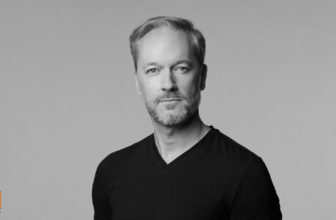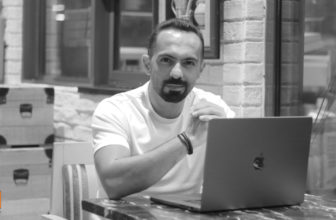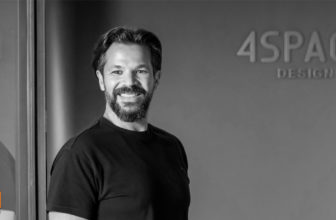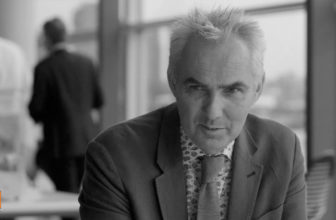Laboratory for Visionary Architecture (LAVA) was established in 2007 as a network of creative minds with a research and design focus and has offices in Sydney, Shanghai, Stuttgart and Abu Dhabi. During its first year, the office has completed a wide range of projects in Germany, Australia and the U.A.E. Chris Bosse is the director of LAVA Asia Pacific, based in Sydney, Australia. Chris is Adjunct Professor and Innovation fellow at the University of Technology, Sydney and lectures worldwide. Educated in Germany and Switzerland, Chris worked with several high-profile European Architects before moving to Sydney. For a number of years Chris was Associate Architect at PTW Architects in Sydney, completing many projects in China, Vietnam, the Middle-East and Japan. Chris’s work on the Watercube swimming center in Beijing received the prestigious Atmosphere Award at the 9th Annual Venice Biennale and Chris was recently recognized as an emerging architect on the world stage by the RIBA London. This last week, Arch2O had a chance to discuss with Chris Bosse his thoughts and views.1. Coffee or Tea?
CB: coffee – a decaf skim soy frappuccino, just kidding.
2. Is there one moment in your life that jumps to mind, which shaped why you have become an architect?
CB: Growing up opposite Frei Otto’s Institute for Lightweight Structures in Stuttgart in the 1970s shaped my desire to be a designer. I remember it looking like a pirate ship from inside with its huge mast and membrane structure. Otto’s form finding experiments for the Munich Olympic Stadium remain a major influence on my thinking.
3. How did you come to be together as a firm?
CB: I first met Tobias Wallisser at the Venice Architecture Biennale in 2004 where we both had projects win awards (he the Mercedes-Benz Museum and me the Beijing Watercube). We joined up with Alexander Rieck in 2007- his groundbreaking work at the Fraunhofer Institute in Stuttgart was a perfect fit for our goals.
4. You have offices in Sydney, Shanghai, Stuttgart and Abu Dhabi. Chris, you are director of LAVA Asia Pacific in Sydney, Australia-and Tobias and Alexander, you are both co directors of LAVA’s European division, located in Berlin and Stuttgart, Germany respectively. Would you ever choose to have a single office with all of you together? Why or why not?
CB: Well we do, it’s the virtual office. When we set up LAVA it was very much as a network, and having offices across the globe, connected virtually, allows us the flexibility to draw on research and resources specific to the projects we are working on.
5. How and when do you start a design?
CB: Ideas come from going for a walk or a swim in the morning. You need oxygen running through your veins. And talking to animals! Going to work and sitting in front of a white sheet of paper is still the best moment, even if that sheet is a screen.
6. How would you describe your style to a stranger recently introduced to you?
CB: our work is not so much about style as performance. Ultimately the architecture of the future is not about the shape but about the intelligence of the system. The intelligence of the smallest unit results in the intelligence of the overall system.
7. How do you view your body of work? Is it an evolution, are there stages, has it been centred around one thing that you continue to seek?
CB: our body of work is centred on one vision: Mankind, Nature and Technology.
LAVA explores frontiers that merge future technologies with the patterns of organisation found in nature and believes this will result in a smarter, friendlier, more socially and environmentally responsible future.
Our design philosophy is MORE WITH LESS: more (architecture) with less (material/energy/time/cost). And we do this through the potential for naturally evolving systems, such as bubbles, spider webs and corals, to create new building typologies and structures – these geometries in nature create both efficiency and beauty.
We continue to seek opportunities to demonstrate how sustainable design is beautiful, efficient and contemporary. The local context should have a strong influence on idea development. However there are families of ideas and solutions that can be applied to different situations.
The Future Home we are building in Beijing will merge our ideas about nature and technology into a futuristic experience.
8. Is there any one project that you place above the others you’ve done, in your mind?
CB: Masdar City, the sustainable city being built in Abu Dhabi is an inspiration for future architectural generations. The city combines the best of Paris, New York, Rome and Istanbul in a carbon neutral, car free, solar powered environment. LAVA won the international competition to design the centre of the 50,000 person city. We designed a hotel, a shopping centre a cinema complex and a conference centre to form the plaza of the 21st century. Our ‘sunflower’ umbrellas create the first mediated outdoor plaza in the Middle East and makes public outdoor space inhabitable throughout the year. The Watercube wasn’t bad either 😉
9. Do you have contemporaries or precedent individuals who you look to for inspiration in architecture?
CB: German architect Frei Otto`s soap bubble experiments for the Munich Olympic Stadium in the early seventies. Verner Panton – his chair anticipated the digital revolution by decades. And Antonio Gaudi, who created buildings of unspeakable beauty and full of innovation inspired by nature.
10. Your architecture has certain tranquillity to it, how do you see your works in conjuncture with the surrounding chaos?
CB: I love the surrounding chaos. It keeps us alive. But our buildings give you moments of rest, or tranquillity.
That tranquillity comes from its design source – the order found in nature and man’s basic need to be in harmony with nature. New materials and technologies enable an adaptability, responsiveness, environmental sustainability and strength not seen in conventional architectural design. As we demonstrate this, the disjuncture will generate more discussion and hopefully action to reform the way of building we experience today.
11. What do you read? Not just now, but do you have a methodology or theory behind what and how you read?
CB: I read horoscopes from last month to see if they all came true.
I recently read the Harry Seidler’s biography, which reminded me of the core-values of architecture and a life long journey with all the ups and downs.
13. What kind of music do you listen to while you work?
CB: Frank Zappa’s extended oeuvre, classical music and Bob Marley. My musical taste is as varied as our architecture, as long as it is based on quality.
14. Michael Caine was quoted as stating that if he could be anything other than an actor, had always wanted to be an architect. If circumstances had shaped things so that you were blocked from doing architecture, what would you be?
CB: a shepherd in the highlands of Switzerland.
15. What advice would you give yourself?
CB: Breathe. Relax. Then draw.
16. What advice would you give to young architects/designers?
CB: Experiment while you are young. Everything around us is designed by someone, so why not by architects? The beauty of architecture is that there are so many openings to design: landscape, buildings, objects, lighting, stages, installations etc. There is a great young generation full of energy and who hope to change the planet and I am looking forward to what that means.





